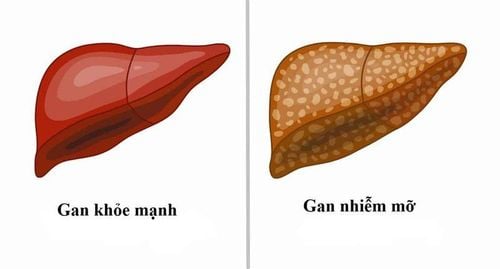This is an automatically translated article.
Video content is professionally consulted by Specialist Doctor II Tran Lien Anh - Neonatology Department - Vinmec Times City International Hospital
Jaundice in newborns 2-3 days after birth is quite common. Mostly in premature babies, about 30% in babies full 40 weeks of gestation. Physiological jaundice in newborns will clear up on its own in about 2 weeks, while neonatal jaundice needs to be treated by a doctor.
If the child has more jaundice than normal, untreated, accompanied by the following symptoms: Poor feeding, lethargy, or breathing pauses... at this stage, specific treatment measures are required. to prevent dangerous complications in babies with jaundice.
The first manifestation of a child with jaundice is a yellow color in the baby's skin and eyes. Yellow color can begin within 2 to 4 days after birth and can start on the face before spreading down the body. Bilirubin levels usually peak between 3 and 7 days after birth. When gently pressing a baby's skin with a finger, causing the area to turn yellow, it could be a sign of jaundice.
Most cases of jaundice are normal in a child, but sometimes jaundice can indicate other conditions. Children with severe jaundice also have an increased risk of bilirubin entering the brain, which can cause permanent brain damage.
Different from the manifestations of neonatal physiological jaundice such as: Appears in the face, neck, chest and abdomen above the navel about 24 hours after birth, disappears within 1 week for full-term babies and 2 weeks with babies born earlier. At this level, the baby is still growing well and gaining weight evenly. Neonatal pathological jaundice when there are the following abnormalities: Dark jaundice appears early; No yellowing after 1 week for full-term infants and 2 weeks for preterm infants; The degree of yellowing of the whole body and eyes; Jaundice combined with other unusual symptoms such as vomiting, fever, crying a lot; Bilirubin in the blood is higher than normal.
To determine whether a child has jaundice or not, it must be observed in daylight, the mother can examine the child's jaundice by gently pressing a finger on the child's skin, making that area yellow. This could be a sign of jaundice in your baby.
Neonatal Physiological Jaundice Turning to Pathological Jaundice in newborns is very fragile and often difficult to recognize because many babies do not have any indicator signs such as: Irritability, struggling or lethargy, aborting but sometimes while the baby is still nursing, moving and sleeping normally. When clinical signs appear, typically increased muscle tone, respiratory disorders, convulsions, lethargy or crying, it is already very severe. At that time, even with treatment, children with jaundice will still leave very serious sequelae.
Should observe the baby's skin in order from top to bottom: Starting from forehead - chest - abdomen - thighs - shins. If the child only has jaundice from the forehead to the chest, then there is no need for the child to go to the doctor, just monitor at home. If the child has jaundice to the abdomen or to the thighs, legs, the child should be taken to a pediatric facility with a Neonatal Department for immediate examination for timely treatment and prevention of complications.
Please dial HOTLINE for more information or register for an appointment HERE. Download MyVinmec app to make appointments faster and to manage your bookings easily.














